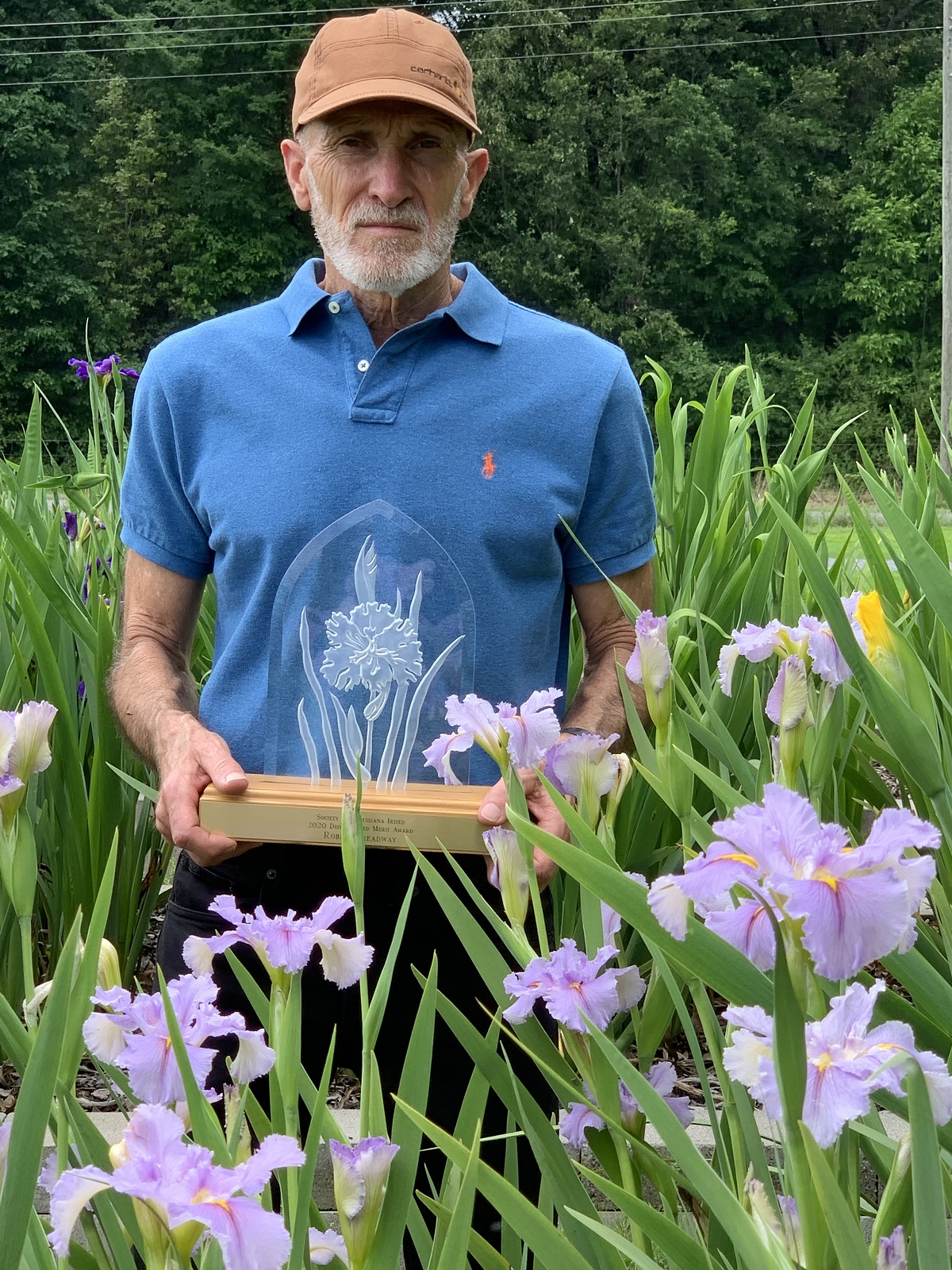Louisiana irises are among the choicest of garden perennials. Gardeners who want a beautiful and well landscaped garden cannot achieve any enthusiasm for the plants when they are grown in isolated patches- one of every kind obtainable all mixed together. Sometimes they are grown in a hole, dug out of the ground to imitate a bog. It’s true they are found, in the wild, in low places. This is because when God had them by Himself the only way the seed could spread was by the rain waters. They do best for us grown in a perennial border, in curves and bays in the shrubbery borders and in the rock garden. I’ve also use them to help make garden ‘pictures all over the place.
The perennial border has camellias and sweet olives for background. We use foxgloves and larkspur for spires, native penstemons, in variety, and elder daisies for filler plants. In between groups of these, we mass plant Louisiana irises, using at least fourteen of each variety together. It’s filled with such lovely ladies as ELLA B. DAVIS, BARBARA ELAINE TAYLOR, SARA GLADNEY, CAROGINIA, LOUISE ARNY, PEGGY MAC, MARIE CAILLET and lots of DIXIE DEB guarding them well is the brilliant red CAPT. BILL. The bed is bordered in GOLD DUST Hemerocallis near the front of the border, and among the violets and pink varieties, we grow the Ozarkana Phlox. When the irises are through blooming, Cleorne comes up to shade them from the hot sun, along with perennial Phlox and Crinum lilies in variety. Using the above plants one can have a very attractive perennial border almost all of the year since the iris foliage is attractive all winter while the camellias are in bloom.
Since the irises vary in height from six inches to four feet, they are very useful in the curves and bays of the shrubbery border to help make garden pictures. Hopa Crabapple with Japanese Snowball can use a tall variety of VIOLET RAY, to complete a picture. A snowball tree behind the bushy Deutzia needs a low growing variety as BAYOU GLORY. Grey-beard trees with Philadelphus need ROYAL VELOUR at the base, surrounded with Ozarkana Phlox. The combinations to use are endless. The entrance to our terrace is between Maqnolia fuscata with DIXIE DEB and Royal Robe violets in front of the shrubs.
Foliosa irises are perfect rock garden plants. They thrive on our hillside among moss and lichen-covered ironstone rocks. White foliosa irises add interest to white violets and Saxrifraga sarmentosa by a large moss covered rock. In large areas among the rocks, we use hundreds of wood violets with Ozarkana Phlox. PRISTINE BEAUTY with dwarf yellow daffodils makes a pretty picture by rocks covered in lichens. Iris foliage adds interest all winter long when rock garden plants are dormant.
Louisiana irises last well as cut flowers for decorating the home. Each blossom lasts for several days and if the stalk is kept in water every bud on the stalk will open. For flower arrangers, it has no peer. It has the widest color range of any flower in the world-covering all the tints and shades of the primary colors, red, yellow and blue-and many colors not found in the color charts. It is among the most graceful of flowers and so is the arranger’s delight.
Louisiana irises are versatile garden perennials.


